Translations 677
Chef Anthony Bourdain Dies

Famous international chef Anthony Bourdain dies
After a fruitful career as a chef in various restaurants in New York, Bourdain wrote his memoirs Adventures in the Culinary Belly and began his successful television career.
Published: Friday 08 June 2018 | 11:16:33 AM
By Juventud Rebelde
digital@juventudrebelde.cu
A CubaNews translation.
Edited by Walter Lippmann.

The famous chef was in Havana in 2011 to film a program from the series No Reservations Author: Twitter Published: 08/06/2018 | 11:12 am
PARIS, June 8.- Popular American chef Anthony Bourdain, 61, committed suicide in France on Friday, according to the CNN television network for which he worked.
Bourdain was in France preparing an upcoming program and his friend Eric Ripert, a French chef, found it without knowledge, the source said.
After an intense career as a chef in various restaurants in New York, Bourdain wrote his memoirs Adventures in the Culinary Belly and began his successful television career.
In 2012 he expanded his audience with his new television program Parts Unknown, in which he interviewed then-President Barack Obama. He received the prestigious Peabody Award in 2013.
Bourdain reportedly hanged himself and his body was found in a hotel room in Strasbourg, France.
The famous chef was in Cuba in 2011 to film a chapter of the No Reservations series and then repeated his trip to the island with the Parts Unkown program in September 2015. From the Caribbean nation he showed off the most traditional cuisine, passionate baseball and vintage cars.
It is with extraordinary sadness that we can confirm the death of our friend and colleague Anthony Bourdain, CNN said in a statement, in which it confirmed that the cause of death was suicide.
One of Anthony Bourdain’s most famous phrases is “Your body is not a temple, it is an amusement park”.
Dueling With Death

Suicides in Sancti Spirits: Dueling with death
By: Enrique Ojito
Translated and edited by Walter Lippmann for CubaNews.

Suicide, considered a health problem in the world, reports an increasing annual rate in Sancti Spíritus, which is above the average in Cuba. Illustrative image.
Elena was never this far from life. She opened the window of the apartment where the unexpected drizzle came in. At that time, her mother was enjoying the adventures on TV in the living room. At that time, her daughter sought to escape for good. Before, there was an overdose of psychopharmaceuticals and intensive therapy; there was a train, an infinite whistle and the hand that pulled her off the railway line at the exact second. She wanted to get rid of her 22 years and her stormy marriage, which was not so. She climbed into the chair to say goodbye, too, from the window. And she stumbled upon the wet emptiness of the night.
Attempts and consummated suicides are not exclusive to Sancti Spíritus or Cuba. The World Health Organization (WHO) estimates that every 40 seconds a person is deprived of life on the planet; the number of deaths from this reason per year even exceeds the number of deaths due to armed conflicts and homicides in that period.
As international and Cuban experts maintain, this problem is not just a phenomenon of today; in the course of humanity, suicide has been valued from different cultural angles, not a few modified over time.
In ancient times, it was reasonable for Vikings and Gauls to take their own lives because of illness or old age; the Japanese resorted to it for atonement or defeat. In the Greco-Latin world, there is an extensive list of recognized figures who proceeded in this way: Socrates, Marco Antonio… In Cuba, first, the indigenous people; then, the Africans brought to the island appealed to hanging before the impotence and bitterness provoked by the Spanish colonizers, according to the book The Psychological Sutopsy: Suicide or Homicide? by Dr. Teresita García Pérez.
For the WHO, suicide – a word coined by the English writer and doctor Thomas Browne in his work Religio Medici in 1642, based on the Latin terms sui (oneself) and caedere (to kill) – is “death resulting from a suicidal act”, conceptualized by the organization itself as “any act by which an individual causes himself an injury, whatever the degree of lethal intent and knowledge of the true motive”.
The object of analysis from clinical, psychological-psychiatric, epidemiological and sociological perspectives…, such action constitutes a global phenomenon and affects both the most industrialized and the least developed nations, a reality that led to joint research between academics from the United Kingdom and the United States, who considered the high mortality rates for this cause in the “happiest countries” paradoxical; understood as happiness, essentially, as having enough money to make and buy what the person wants.
Regardless of this reductionist view, it also reveals the loss of human lives -even more so due to suicide-, whether in Japan or Switzerland, or in Cuba, with high annual rates per 100,000 inhabitants in the Americas.
This pitiful truth has been manipulated for political ends by the media to create opinion matrices against the Revolution, a project that can be improved and which has had the human being as its cornerstone, as demonstrated by the recent presentation of the report of the Greater Antilles to the Universal Periodic Review, a mechanism of the United Nations Human Rights Council, based in Geneva.
Despite the State’s efforts to guarantee the right to existence – as the infant mortality rate of 4.0 reported last year attests – 8,954 people took their own lives in the country from 2013 to 2017, a period in which suicide was among the top ten causes of death – similar to the world trend – according to the Statistical Yearbook of Cuba and Health.
Specifically, Sancti Spíritus recorded 389 deaths for this reason from 2013 to 2017, 90 of them the previous year. The latter figure, in addition to tripling the number of deaths caused by traffic accidents in 2017 here, represents the highest of the five-year period, when annual death rates from intentionally self-inflicted injuries always exceeded the national average in that period and were among the top 10 causes of death in the territory, according to the Statistical Yearbook and sources of the Provincial Health Directorate.
From previous centuries to the present day, scholars have delved into the manifestations of suicidal behavior. As early as 1820, the French psychiatrist Jean Pierre Falret stated that suicide was the result of a mental disorder; in 1838, the Frenchman Esquirol argued that it was the result of an emotional crisis. The sociologist Émile Durkheim argued in his book The Suicide in 1897 that it was the result of the interaction between the social facts and the individual motivations of the victim.
In Sancti Spíritus, each completed suicide leads to the analysis of the Provincial Technical Advisory Commission on Suicidal Conduct, which determined that the cases of 2017 were linked, to a greater extent, to personal and family conflicts.
In order to save the lives of those who demonstrated suicide attempts and, fortunately, survived, the commission itself, with the support of the municipalities’ Mental Health departments, also evaluated the attempts, which amounted to 468 last year, a number that is often distanced from reality, given the stigma that acknowledging it arouses in the social imaginary.
More than half of these events were due to family friction, conditioned by dysfunctional homes, misunderstandings and communication problems. Couple and personal conflicts also led to the attempt, significantly present in the female group of 20 to 39 years old.
However, it is a matter of concern that more than a third of the attempts in 2017 in Cabaiguán – the municipality with the highest suicide rate in the province during the period – were among adolescents, events related to the lack of communication in the family, according to Orlando Ríos Taño, head of the Mental Health Department there. This commentary is in line with the evidence found in the inquiry about the causes and factors associated with the suicide attempt in that age group in Sancti Spíritus – it would deserve a particular analysis – published in the Cuban Journal of Hygiene and Epidemiology.
Knowing that the greatest number of suicides in 2017 was concentrated in Sancti Spíritus among people aged 60 years and over, “differentiated actions are carried out in elderly people who are alone, fragile and in a state of need, with adequate follow-up of psychiatric pathologies, especially those with a high suicidal risk,” according to Ledanay Aquino Pérez, Mental Health Coordinator at the Provincial Directorate of the sector.
Orlando Ríos warns of this vulnerability when he examines it in a scenario marked by the gradual increase in the number of single-person families due to migration abroad, especially of children, a phenomenon that has plunged many of those who remain on the island into depression.
Experts have assessed the influence of depressive disorders on suicidal behavior, associated with factors such as psychological functioning and personality factors (low self-esteem, hopelessness) and the presence of psychiatric pathologies and family conditions (divorce from parents, pressure from parents on children).
The relationship includes socio-demographic, biological (terminal illnesses, somatic deformities and amputations) and social reasons: poor support and acceptance of peers, school problems, interpersonal losses, alcoholism…
Several national studies refer to the incidence of disadvantageous economic conditions in interaction with other causes, a criterion supported by the increase shown by the suicide rate in the most dramatic years of the special period in Cuba.
Prior to this, in 1989, the Cuban State implemented the National Program for the Prevention of Suicidal Behavior, a reference in the world, but not executed with similar quality in the different areas of health in the country, according to the research consulted.
This program gives primary care a leading role in the identification of individuals at risk, as noted by this reporter at the Family Physician’s Office No. 20, from Polyclinic 2, in Cabaiguán; but it can be improved in other units of this type in the same territory.
In order for the program to leave the role and be corporated, there are Technical Advisory Commissions from the national to the municipal level, in charge of systematically evaluating manifestations of suicidal behavior, followinf-up of detected cases, intervention of the Mental Health teams and training, without forgetting the certainty of Martí: “It is a crime not to oppose all possible obstacles to death”.
The WHO insists that prevention transcends the borders of health systems and its approach must be multifactorial, with a focus on causes, in order to mourn death. At the same time, it warns of the consequences of suicide: the loss of human beings, family trauma and economic costs.
These expenses include the three operations that Elena underwent at the Camilo Cienfuegos Provincial General Hospital during her two months of admission. Only a miracle saved her life after she threw herself into the void that night. Only the skill of the specialists gave back the freshness to my friend’s new face.
(Taken from Escambray)
Marx Returns Again and Again

Marx Returns Again and Again
By Ariel Dacal Díaz
Translated and edited by Walter Lippmann for CubaNews
Friendship, family, love and politics cross in this film from side to side, which traps, sensitizes, moves thought, renews indignation, places the characters in their context and demands we take a stand on that very present past.
The film that motivates these lyrics, The Young Marx, is a daring and challenging work. It brings to our time an accessible and necessary Marx, both by his thought and his conduct.
This is material that takes up ideas with more than a century of statements, but which are not old at all: abolishing property as a natural right, unraveling the materialism of human conflicts, understanding work as the primary source of the creation of social wealth and assuming criticism as a revolutionary method of emancipation.
The film offers revolutionary and loving content at the same time. It tells us about the life of a young man who, without looking for future transcendence, lived his constant conflicts with passion. A man aware of the paradox of his existence: having written so much about money having so little money. The young man who confesses to his close friend: “I need to write, but I also need to feed my family. He who, along with the material deprivation, suffered persecution and confronted the authorities in every country he stepped on. As Eduardo Galeano recalls, “this prophet of the transformation of the world spent his life fleeing from the police and the creditors”.
The story of the young Marx is also one of paradigmatic friendship with the young Engels, who became an irreplaceable complement to his theoretical and political creation, in support of his existential contradictions and indispensable economic support of the family in the face of the difficulties the German philosopher had in finding stable paid work.
Jenny of Westphalia, his wife, was a vital force in the life of the Moor (as he was known); another fair and wise recreation by the film. She was a critical, enlightened, scathing woman, consistent with ideals that led her to renounce her aristocratic privileges; who was, at the same time, a loving spouse, a supporter in daily material life and a companion of great intellectual depth.
The young philosopher, recreated in almost two hours of fiction, took up the struggle against the horrors of nascent capitalism with vehemence and certainty. He understood, demonstrated and criticized the exploitative essence of this socio-economic system, and chose to be on the side of the workers in this struggle. He testified to the coherence between the ideas put forward and the practice of life: he interpreted the world and dedicated himself to transforming it. He went further and proposed an alternative: communist society.
This man committed too many transgressions throughout his life to be forgiven by the usurers of history and their emissaries. It is an impertinent ghost that awakens the wrath of the powerful of the earth; those who in the face of the fear of losing their privileges are capable, to avoid it, of the most atrocious episodes. Marx, the spoilsport of the conformists, the crowd agitator, the one who harasses the power of the powerless, is a danger with which they have not been able to deal.
The bundle of lies, half-truths and distortions poured out on his life; the refined, scientific and enlightened criticism that flatly denies him; the attempt to reduce his ideas to a condition of utopia without a future and the foisted faults that do not touch him, fade before his transparent, verifiable, radical, sharp and undeniable truth.
It is not by chance or whim that Marx returns again and again. A world of established injustices still persists and must be interpreted, criticized and transformed.
It is no accident that I come back young and ask you in a radical way, “What is your political position in life? If you haven’t asked yourself this question yet, then I recommend this film.
Cultural Civil War in the U.S.A.
Cultural Civil War in the USA
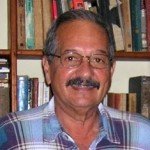
By Manuel E. Yepe
http://manuelyepe.wordpress.com/
Exclusive for the daily POR ESTO! of Merida, Mexico.
Translated and edited by Walter Lippmann.
“America is at war with itself. It is actually a function of the nation’s heritage, the past that challenges specific aspects of a modern present. This gives rise to a flow of traditions. Racism, a pseudo-border mentality and religious fundamentalism persist at the present time. These are the traditions that characterized the first half of the nation’s history, and while some of them may have retreated into latency in the last fifty years, they are now back with us. As a result, Americans are in the midst of an ongoing culture war that in many ways is as old as the nation itself.”
The paragraph above is the opening of an article published in the latest issue of the U.S. online weekly CounterPunch by Lawrence Davidson, a leading scholar who, born in a secular Jewish home in Philadelphia, was one of the founders of Students for a Democratic Society (SDS) during the war against Vietnam.
In his essay, Davidson states that a racist culture took shape in American life before the founding of the United States. This culture was particularly rooted in the colonies/states of the South, where slavery became not only a fundamental economic institution, but also an institution that projected the image that the South had of itself. In the North, a racist culture was also widespread and society was segregated, but the difference was that the labour system in the North was not based on slavery.
In the South, this deep-rooted culture of racism was briefly interrupted when, after the Civil War, there was a brief period of Reconstruction (1865-1877) during which the northern military occupation suppressed most racist laws. The main reason for this was political and not social. Under the Northern occupation regime, black men were recognized as citizens and could vote. This led to support for Abraham Lincoln’s party and allowed abolitionist Republicans to retain control of Congress. Reconstruction only lasted as long as the abolitionist faction dominated. It ended in 1877.
The US military was withdrawn from the southern states. Almost immediately there was a region-wide reversion to a form of race relations in which the oppression of slavery was replaced by “Jim Crow” laws that legitimized segregation and discrimination against black people.
This situation lasted for nearly another hundred years, until in the 1960s, when a massive civil disobedience movement known as the Civil Rights Movement finally succeeded in outlawing racist practices within the public sphere in both the South and the North.
Davidson stresses that the changes were limited to the public sphere because the private sphere was left to each person’s individual will. Nothing was done to change racist perceptions and behavior within the private sphere. There was not even any effort to force the teaching of acceptance in public schools in order to better erode private racist perceptions.
Racism is an important issue in the nation’s current civil cultural war, but it is not the only one. Another is the fight for firearms laws, which are currently inadequate to ensure public safety.
The myth of the robust and armed individual is in fact a product of the television and film distortion of the history of the “old West”.
Davidson refers to the survival of nineteenth-century Christian fundamentalism, which, while not including all Christians in the country, encompasses millions of believers who still adhere to the “faith of their fathers” in a way that fosters social inequality and undermines the secular nature of the state. It is also a faith riddled with racial and gender intolerance, full of shameful hypocrisy and self-righteous self-centeredness.
The Christian right, along with gun rights enthusiasts and those who privately support a diffuse stream of racist traditionalism, believe that modern movements for equal rights, as well as the demand for security and protection communities through law and regulation, are threats to genuine American culture because they threaten the traditions of “freedom” that make their world ideologically enjoyable.
Against this backdrop, it is clear what the president means when he calls for “making America great again”.
June 7, 2018.
We won’t let them destroy our dreams

We won’t let them destroy our dreams.
Statement by Cuban youth in response to the disrespectful and absurd words of U.S. Secretary of State Mike Pompeo at the OAS General Assembly
Posted: Tuesday 05 June 2018 | 09:41:40 PM
By Juventud Rebelde
digital@juventudrebelce.cu
A CubaNews translation.
Edited by Walter Lippmann.
History repeats itself. Arrogance, ignorance of Cuban reality and contempt for the peoples of Our America, lead once again to unacceptable, lying and manipulative statements in the mouth, this time by the U.S. Secretary of State, Mike Pompeo, during the OAS General Assembly, which was well defined by Cuban Foreign Minister Raul Roa Garcia as the United States Ministry of Colonies.
They are wrong again and this character makes a fool of himself when he talks about the lack of opportunities for Cuban youth and questions our rights and options for building the future. This is a gross provocation because, even for someone like him, it would be impossible to ignore the revolutionary conquests that have allowed our children, adolescents and young people to grow and develop showing impressive and irrefutable human development indices, within a society that listens, protects and empowers them.
He speaks of supporting young people and he does so on behalf of the government that is applying a criminal blockade that is widely rejected and condemned by the entire world. It’s the blockade which is responsible for limitations and shortcomings that have a direct impact on the very young people he is now hypocritically trying to defend. He offends with the double standards of those who have given support and refuge to those responsible for terrorist acts that have caused the death and physical incapacity of hundreds of young people throughout the revolutionary process.
We ask ourselves: Why does Mr Pompeo not ask for support for the millions of young people in this region – the most unequal on the planet – who are victims of unemployment, violence, disease, discrimination and extreme poverty?
The Secretary of State cynically advocates the realization of young Cuban talent by pretending that someone believes in his words, when a simple visit to Cuba or a consultation with the statistics of any international organization of education, science and culture would be enough to deny it: Thousands of doctors, hundreds of talented scientists, renowned artists in all their manifestations, champions in sport, teachers of international merit and dozens of other girls and boys of this land destroy the laughable fallacy of Pompeii.
Cuba hurts them. They know that they have not been and will not be able to reverse our history. They have witnessed the magnificent act of sovereignty that constituted the electoral process in our country, as a result of which the new generations have nurtured all levels of government, reaffirming continuity and destroying the dreams of political change that will allow them to once again be the masters of this island.
We are a generation full of motivation. They will never be able to manipulate us, nor put us at the service of imperialism and its lackeys. We are children of mambisa lineage and of a dignity learned from our historical leaders. We are the owners of our streets, those where today we walk in peace and security. We will not allow them to destroy our dreams; all our forces and energies are at the service of the Revolution.
Young Communist League
Dangerous Errands

Dangerous Errands
Package agencies, which do not have official contracts with Cuban companies, are engaged in the illegal trafficking of goods from abroad. For this purpose, they use the route of passengers who accept to bring different products in exchange for payment or compensation. The General Customs of the Republic faces these phenomena with rigor and intelligence
Posted: Wednesday 06 June 2018 | 10:08:01 PM
A CubaNews translation.
Edited by Walter Lippmann.
TRANSLATION: “But officer, I swear I didn’t know this was here!”
To date, 113 cases have been detected of goods traffic sent by 29 illegal parcel delivery agencies from abroad. There have been four reports of smuggling associated with this phenomenon, and more than three tons of products of various types have been confiscated which had tried to enter the country through these networks, the General Customs of the Republic (AGR) reported Wednesday.
Colonel Wiliam Pérez González, deputy chief of the AGR, explained that these are agencies that do not have official contracts with Cuban companies authorized to carry out these operations, and that for this purpose they use the route of encomiendas (internationally prohibited) to passengers, who accept to bring the goods in exchange for payment or compensation.
He added that this action poses a high risk, since sometimes passengers, and often even the same recipient in Cuba, are unaware of the contents of the packages, and when transporting them they may be involved in cases of trafficking in drugs and other illegal materials.
This phenomenon generates the greatest acts of corruption within the AGR, in addition to showing features of organization and impunity, from the networks developed in the country for the commercialization of goods. For all these reasons, he said, the various illegal trafficking networks related to goods are being tackled with rigor and intelligence.
Perez Gonzalez explained that, despite repeated warnings, cases continue to be detected of passengers who, without knowing, carry prohibited items as part of their luggage, thereby incurring violations or crimes punishable under current legislation.
On this subject, in April of this year, a note published on the Customs website (www.aduana.gob.cu) referred to the fact that in the cases discovered, travellers “did not know the contents of the packages”, brought “in exchange for payment made by parcel delivery agencies” dedicated to this activity “without complying with the provisions established in Cuba”, or those of the country of origin.
It also explained that since these are articles sent to third parties by agencies, “their importation acquires a commercial character”, which is prohibited by Cuban customs regulations, and “subject to the administrative sanction of confiscation, if there is no more serious crime”.
At the same time, Customs advised travellers to “refrain from being part of the chain of illegal importation of goods” which unauthorised offices “promote with commercial and enrichment interest” in order to speed up their stay at the border.
Since October 2017, the list of customers with whom the UEB Agencia Aduanal and Transitaria Palco have a parcel and service contract for the shipment of non-commercial cargo of legal trade and origin, as well as the shipping companies with which they have a contractual relationship, has been published on the aforementioned website.
Dear passenger…
What do you need to know about Customs when you arrive in Cuba?
Native-born persons, in their capacity as passengers, are not authorised to carry parcels for other natural or legal persons.
As parcels are understood those goods, packages and packages sent from abroad to third parties using the passenger to transport them.
What risks can be taken with the parcels?
They can be used for the movement and masking of substances and articles used in terrorism, drug trafficking operations and smuggling of goods, which can endanger security, human health and the environment.
The passenger who is the carrier of an order assumes the administrative or criminal responsibility derived from the breach of this regulation.
Some illegal agencies
According to Customs, among the 20 illegal agencies established in the United States are XAEL Habana, Ramiro Miltservice, Va Cuba, Cubamax Travel, Viajes Coppelia, Habana Air, Blue Cuba Travels, Xcellende Travel, Miramar Havana Corp, Rapid Multiservices, Managua Travel, Cubana Service, Caribe Express, Tocororo Travel, Mi Número Local (formerly Cuba Llama) and Central America Cargo.
Notes on shipments
For customs purposes, Shipments shall be understood to be all those received using the services provided by companies and entities expressly authorized for this purpose, either by post or courier, or by using air or sea freight, the latter by air waybill or bill of lading, as appropriate.
Shipments may not contain:
Hidden items to circumvent customs control.
Articles of the same type which, irrespective of their quantity and value, are presumed to be of a commercial nature.
Items whose value, individually or as a whole, exceeds the shipping limit of 200 pesos.
Cash and securities of any kind.
Pornography or other articles that violate morals, good manners or internal order.
Household appliances that are not allowed to be imported.
Equipment requiring prior approval from the Control and Supervision Agency of the Ministry of Informatics and Communications:
Articles of animal or plant origin prohibited by sanitary, phytosanitary and veterinary authorities.
Cuban Customs projections for 2018
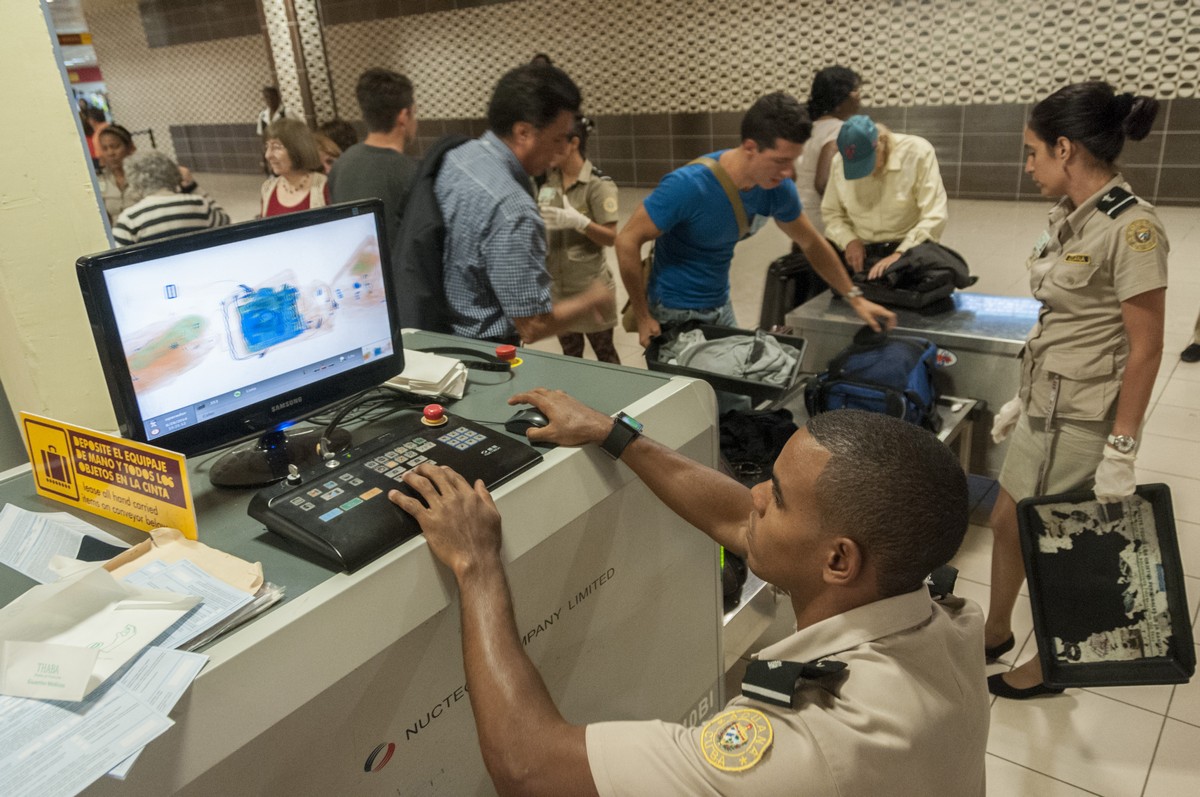
Customs, x-ray and luggage area of Terminal 3 of the José Martí International Airport. Havana. Cuba. PHOTO: Roberto Suárez
Continue to strengthen the system of customs confrontation and improve actions to minimize acts of corruption and crime under a preventive, prophylactic and conscious refusal approach.
Continue to make progress on the technological modernization project to enable the timely detection of acts that threaten national security.
To promote the integral development of the training, qualification, certification and categorization of the forces (Intermediate Technician and Higher Intermediate Technician in Customs).
Continue work on computerization and improvement of customs processes (one-stop shop, authorised economic operators, etc.).
To promote institutional communication actions aimed at the internal and external public.
Children and the Pied Piper

Children and the Pied Piper of Hamelin
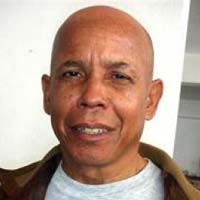 Author: Julio César Sánchez Guerra | internet@granma.cu
Author: Julio César Sánchez Guerra | internet@granma.cu
June 5, 2018
A CubaNews translation.
Edited by Walter Lippmann.
In an old legend, back in 1284, the city of Hamelin was infested with rats. A stranger appeared and proposed to free them from such undesirable company in exchange for a reward. The people accepted the deal, the man played a flute and brought out all the mice, who then followed the flutist, who took them to the Weiser River, where they drowned. Then the people refused to pay the reward. The flutist returned one day in June and, in an act of revenge, with the music of the flute he took all the children who came after him to a cave from from where they never returned.
Fables hide stories and symbols. Has the pied piper returned to look for the children? Today a strange “music” threatens to take them away and rob them of their innocence in one fell swoop.
From an early age they are subjected to adult language. They consume songs marked by high doses of sex, video games and audiovisuals that stimulate the culture of violence…. From the room where they play connected by Zapya one says happily: “I’ve already killed more than 30!».
Now some families prepare the girls for the mini-quinceaneras where they are dressed in clothes that are not proper for their age; as if their parents were saying to their children: “Fly, fly, it’s time for you to grow up!” On the other hand, a globalizing wave of brands and manufactured customs seduces them with omnipresent toys.
Faced with these realities, the family, school, society… have new cultural challenges. How can we educate our children today? You can’t answer with prescriptions. But it is not from the “pedagogy of the cry” or confusing children with the grass that grows alone. We cannot forget Martí’s warnings: “The street is guilty when it does not educate”.
Let’s encourage habit of reading and the ability to astonish. Since when do we not put our children to sleep by reading them a story? Or do we prefer that they sleep with their cell phones in their hands? Let us teach with all our strength the mystery of the poem The Two Miracles, from the Golden Age, where nature is saved by the kiss of a child to a butterfly.
Let us always return to our children the country of the wonders and powers of imagination, the one that my Saharawi brother Abdel Mayí taught me in a book of his culture and colonised country, a book called Tales under the Jaima.
The teacher came into the classroom threatening all the children: “You have two minutes to paint on your blackboards a bird and a tree; if you don’t do it in that time, I’ll kneel you down facing the wall, get to work! The children painted desperately. As the two minutes passed, the master struck a blow on the table. “Time’s up: raise your boards!” In all of them there was a tree and a bird, but a child at the end of the classroom had only one tree. The teacher prepared to give the punishment, and with rage asked, “Where is your bird? The boy, with his face full of magic elves, replied: “Teacher, when you hit the table, the bird was frightened and flew away”.
Let’s feed the children with the bird that always flies, with the music that beats the pied piper so that this time it leaves our children at home, and in our souls, a song with our childhood intact.
REVIEW: Vicki Huddleston’s Cuba memoir
Comments by By Dr. Néstor García Iturbe Translated and edited for CubaNews The first commentary on this book refers to what is printed on the cover as it is announced as “a diplomat´s chronicle of America´s long struggle with Castrós Cuba”, which does not reflect the reality of what is presented in the book. Part 1 of the book recounts Vicki Huddleston’s stay at the State Department’s Office of Cuban Affairs from 1989 to 1993. In referring to this stage, the author failed to take into account 30 years of aggression by the United States against Cuba, including the beginning and strengthening of the economic blockade, the invasion by the Bay of Pigs, the Missile Crisis and the thousands of terrorist activities and sabotage that Cuba suffered during those thirty years. That’s actually an important part of “Americás long struggle with Castro´s Cuba.” The correct thing would have been for the cover to show that the chronicle to which reference is made only from 1989 onwards, since in the way it is written it seems to have been written to cover the whole period since the beginning of the Cuban Revolution. In the first chapter she gives us a sample of the alliance between the U.S. government with the worst of the Cuban exiles, mainly with the Cuban American National Foundation and the Brothers to the Rescue [BTTR]. It presents the latter as an almost philanthropic organization dedicated to rescuing rafters, when it repeatedly violated Cuban airspace to launch propaganda and explosive devices. The author herself reports that, as a State Department official, in some of these violations of Cuban airspace, she travelled as a passenger on one of the BTTR planes. This is an example of something that an U.S. government official is not supposed to do. In her book, Mrs. Huddleston tries to describe, according to her, the police regime in Cuba, especially organized by the State Security, which she says does not miss any movement of foreign diplomats. Assuming that the author was totally convinced of what she said, we could describe what she sees as naïve during Illinois Governor George Ryan’s visit to Cuba. She states that during his stay she prepared a meeting attended by various ambassadors, and several of the so-called “dissidents”. And that in order to be able to speak freely, at the end of the meal she offered in her home, she waited for the servants to leave the room where they were gathered to begin the testimonies and opinions of each of them. If Cuban security has such a broad and efficient control, how many microphones would there be in the premises selected by Mrs. Huddleston to hold the secret meeting? The interference in Cuba’s internal affairs is also recognized by the former ambassador, when in a meeting with Colin Powell, she told him how she carried out actions with dissident groups, private libraries and independent journalists, adding that if they had more resources they would do much more. What would be the attitude of the U.S. government if Cuba or another nation were to begin to foment opposition for the purpose of overthrowing the established regime? Is that the right attitude of a diplomat representing his country to another? The book, at least, gathers the maneuvers and activities carried out by the United States against Cuba in order to destroy the Cuban Revolution. A true compendium of illegalities, dirty maneuvers, violations of diplomatic law, conspiracies and interference by the United States in Cuba’s internal affairs. A better title for the book would have been “Our Crook in Havana”. June 6, 2018
Comentarios del Dr. Néstor García Iturbe El primer comentario sobre este libro se refiere a lo que tiene impreso en la cubierta pues se anuncia como “a diplomat´s chronicle of America´s long struggle with Castrós Cuba”, lo cual no refleja la realidad de lo que se expone en el libro. La parte 1 del mencionado libro relata la estancia de Vicki Huddleston en la oficina de Asuntos Cubanos del Departamento de Estado a partir de 1989 hasta 1993. Al referirse a esa etapa el autor ha dejado de tomar en consideración 30 años de agresiones de Estados Unidos hacia Cuba, lo que incluye el inicio y fortalecimiento del bloqueo económico, la invasión por Bahía de Cochinos, la Crisis de los Misiles y miles de actividades terroristas y sabotajes que durante esos treinta años Cuba sufrió. Esa es en realidad una parte importante de “Americás long struggle with Castro´s Cuba.” Lo correcto hubiera sido que en la cubierta apareciera que la crónica a la que se hace referencia e solamente a partir de 1989, pues en la forma en que está redactado parece que fuera durante todo el período desde el inicio de la Revolución Cubana. En el primer capítulo nos da una muestra de la alianza del gobierno estadounidense con lo peor del exilio cubano, principalmente con la Fundación Nacional Cubano Americana y con los Hermanos al Rescate mostrando estos últimos como una organización casi filantrópica dedicada rescatar balseros, cuando la misma en repetidas oportunidades violó el espacio aéreo cubano para lanzar propaganda y artefactos explosivos. La propia autora relata que siendo funcionaria del Departamento de Estado, en algunas de esas violaciones del espacio aéreo cubano viajó como pasajera en uno de los aviones. Una muestra de algo que supuestamente no debe hacer un funcionario oficial del gobierno estadounidense. En su libro la señora Huddleston trata de describir, según ella, el régimen policiaco en que se vive en Cuba especialmente organizado por la Seguridad del Estado, que según ella no le pierde movimiento alguno a los diplomáticos. Partiendo de que la autora estuviera totalmente convencida de lo que dice, pudiéramos calificar de ingenuo lo que describe durante la visita a Cuba del Gobernador George Ryan. Plantea que durante la estancia del mismo preparó una reunión a la que asistieron distintos embajadores, varios de los llamados “disidentes” y que para poder hablar libremente, al terminar la comida que ofreció en su casa, esperó a que los sirviente abandonaran la habitación donde estaban reunidos para comenzar los testimonios y opiniones de cada uno. ¿Si la seguridad cubana tiene un control tan amplio y eficiente, cuantos micrófonos habría en el local seleccionado por la señora HUDDLESTON para efectuar la reunión secreta? La injerencia en los asuntos internos de Cuba también es reconocida por la ex embajadora, cuando en una reunión con Collin Powell, le relataba como realizaba acciones con grupos disidentes, bibliotecas privadas y periodistas independientes, agregando que si tuvieran mas recursos harían mucho mas actividades. ¿Cuál sería la actitud del gobierno de Estados Unidos si Cuba u otra nación comenzara a fomentar la oposición con el propósito de derrocar el régimen establecido? ¿Es esa la actitud correcta de un diplomático que representa a su país ante otro? El libro, al menos, recoge las maniobras y actividades realizadas por Estados Unidos contra Cuba con el fin de destruir la Revolución Cubana. Un verdadero compendio de ilegalidades, maniobras sucias, violaciones a lo establecido en el Derecho Diplomático, conspiraciones e injerencia por parte de Estados Unidos en los asuntos internos de Cuba. El mejor titulo para el libro “Our crook in Havana. 6 de junio 2018
Our Woman in Havana by Vicki Huddleston

by Walter Lippmann.
Our Woman in Havana por Vicki Huddleston

Where Will US Domestic Politics Go?
Where Will US Domestic Politics Go?

By Manuel E. Yepe
http://manuelyepe.wordpress.com/
Exclusive for the daily POR ESTO! of Merida, Mexico.
Translated and edited by Walter Lippmann.
The surprising performance of veteran Senator Bernie Sanders in the 2016 presidential elections and the disappointing performance at the top post by the unpredictable Donald Trump have stimulated a very large part of the US public – especially (but not only) Democratic Party supporters – to believe that the United States needs a Sanders and a new party.
Many of those who reason in this way believe that the old Vermont politician should take up the challenge to defeat Trump in 2020, with or without the backing of the machinery of the historic “donkey” party. Others feel that the energy of a younger leader who would take up the ideological banner of the old Sanders, with the support of a new party with or without Bernie, should be available.
These and many other variations have in common the assumption that the current President Donald Trump has already dug the grave of the Republican party and his own with his performance in the first two years of his catastrophic term.
According to the most credible polls, about 60% of U.S. voters in general, and nearly 80% of those who are not affiliated with either of the two major parties, are in favor of the emergence of a new party of majorities.
Writing in the Huffington Post, September 27 of last year, writer and journalist Gail Mellor quoted Sanders’ words calling for “the unity of the vast majority of Americans to survive together, because if we start divided, we will not succeed”. However, she recalls that at least four times in the last two years, when she has been ready to start up a new progressive party, it has been Bernie himself who has blocked it.
According to Mellor, Sanders has been working to unify the deeply-divided and corrupt Democratic party – to which he himself does not belong – but, in practice, his position has not contributed to the rise of a new progressive political force with the potential to come to the forefront of the country’s leadership. This is because he has insisted on the survival of the Democratic Party with a different set of policies as a prerequisite.
The main support Bernie Sanders had when he aspired to the White House came from “Generation Y,” also called “the millennials,” names demographers and researchers give to people born between 1980 and the early years of the new 21st century, who represent 28% of United States voters today.
He sought the Democratic presidential nomination in 2016 because young progressives from that party dragged him into an effort to clean up U.S. politics, end ongoing wars, restore social safety nets and confront climate change. They had not been able to recruit someone at the national level of the Democratic or Republican parties to lead the fight for this agenda who was not receiving money from global corporations.
Sanders, an independent (non-partisan), had held state and federal office without party or corporate backing for 42 years. Despite being a convincing, passionate and well-informed politician, he was a stranger at the national level.
It was the millennials of the Democratic Party and its environment, the supporters of the country’s withdrawal from imperialist activity, of a policy of cultural and political change, and of the reorientation toward social democracy, who made him a national public figure and led him to compete for the Democratic Party’s nomination for the White House.
Although formally independent, Bernie acted as a Democrat because he was aware that the two dominant parties of the system had closed access to the Presidency of the nation to anyone who did not do so through them. The Democrats welcomed Sanders as their candidate because he gave the party’s primary campaign an illusion of competition that would help its already elected candidate to legitimize herself.
The Democratic National Committee (DNC) calculated that Hillary Clinton would easily beat Trump because she had a huge amount of corporate money, while Sanders, with the support of young progressives, was able to gather, in a short time, large crowds for Hillary Clinton campaign rallies.
It seems obvious that Sanders dreams of the possibility of taking the Democratic Party over, at the head of a vigorous minority movement. This would not be an easy thing to achieve but there remains the alternative, feared by the neoliberals of the party, of going on to the formation of a new independent progressive party.
June 4, 2018.
MDC Meets Jeff Flake and Google President

Diaz-Canel Receives U.S. Senator Jeff Flake and Google President Eric Schmidt
During their meeting, they exchanged views on the status of bilateral relations between Cuba and the United States, as well as possible areas of cooperation of mutual interest.
Posted: Monday 04 June 2018 | 03:03:04 PM
By Juventud Rebelde
digital@juventudrebelde.cu
A CubaNews translation.
Edited by Walter Lippmann.
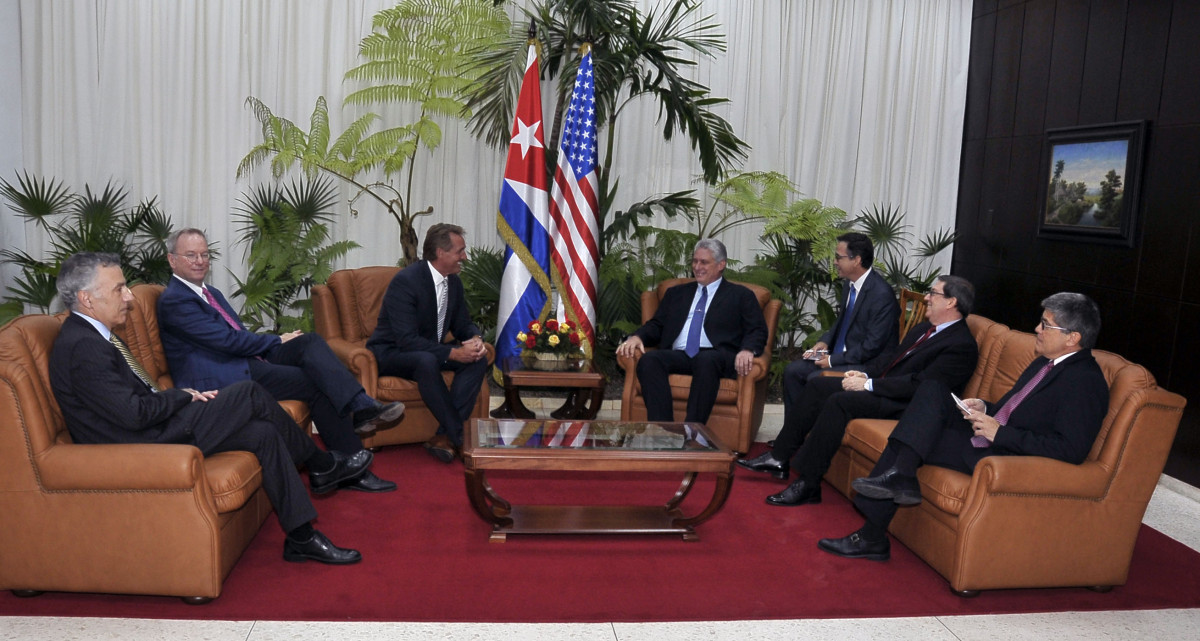
Diaz-Canel received U.S. Senator Jeff Flake and Google President Eric Schmidt Author: Revolution Studies Published: 06/04/2018 | 02:58 pm
President of the Councils of State and Ministers, Miguel Diaz-Canel Bermudez, received Republican Senator Jeff Flake and Google’s Executive President Eric Emerson Schmidt on Monday afternoon. During the meeting, they exchanged views on the status of bilateral relations between Cuba and the United States, as well as possible areas of cooperation of mutual interest. The distinguished visitors were accompanied by the United States Chargé d’affaires in Cuba, His Excellency Philip Goldberg. On the Cuban side, the Minister of Foreign Affairs, Bruno Rodríguez Parrilla, and the United States Director General of the Foreign Ministry, Carlos Fernández de Cossío Domínguez, were present.
Subscribe to Blog via Email
| M | T | W | T | F | S | S |
|---|---|---|---|---|---|---|
| 1 | 2 | 3 | 4 | 5 | 6 | 7 |
| 8 | 9 | 10 | 11 | 12 | 13 | 14 |
| 15 | 16 | 17 | 18 | 19 | 20 | 21 |
| 22 | 23 | 24 | 25 | 26 | 27 | 28 |
| 29 | 30 | 31 | ||||

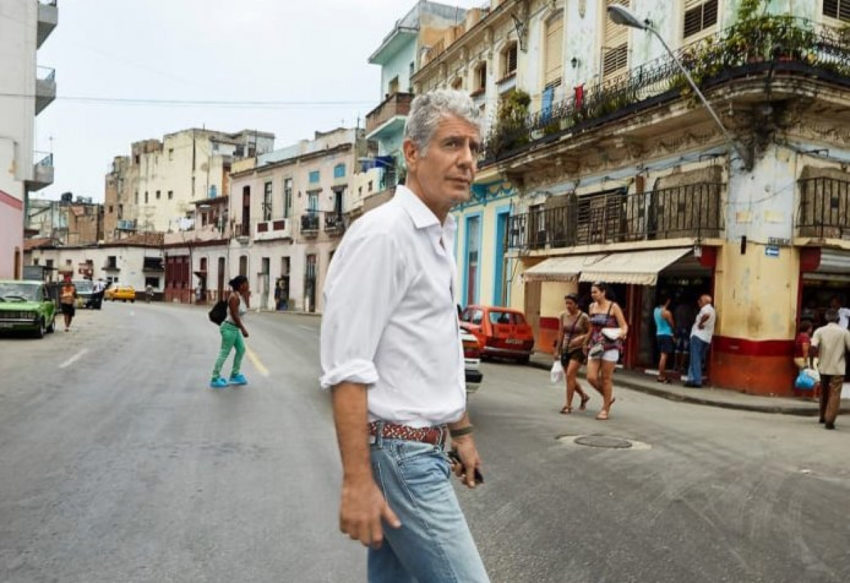

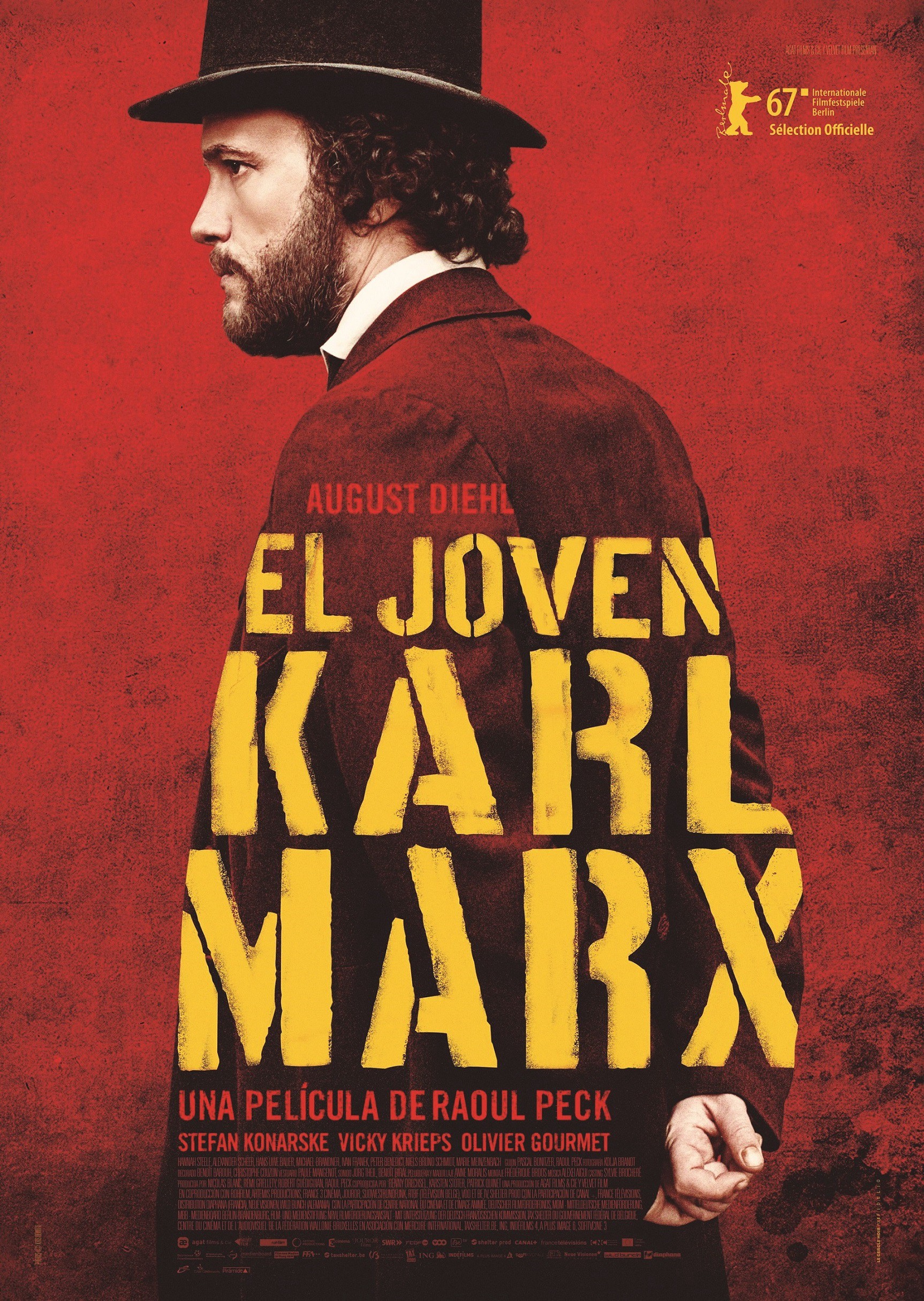
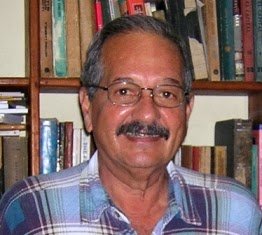


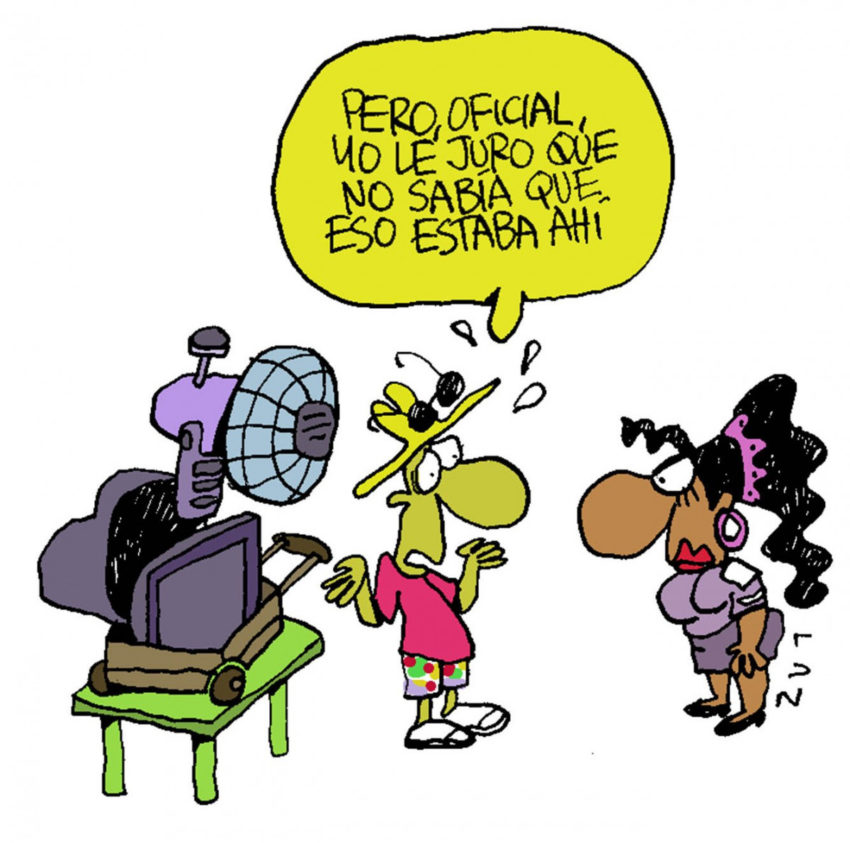

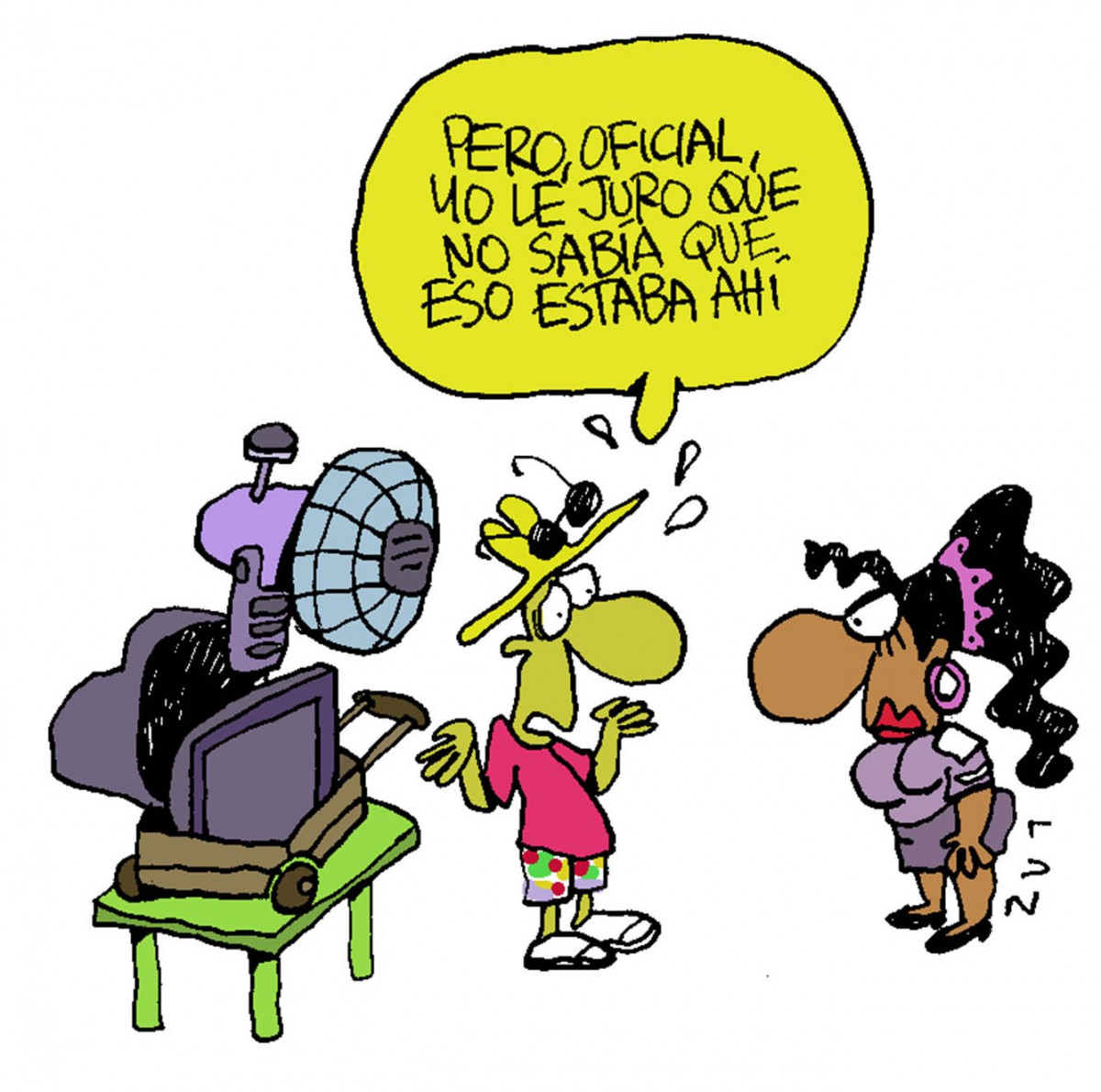
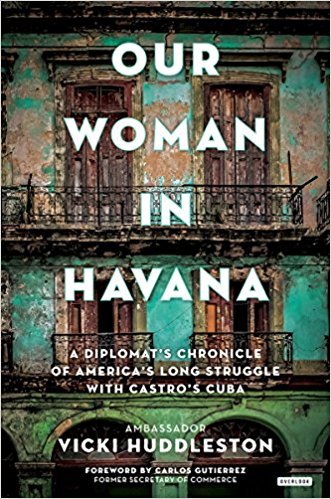
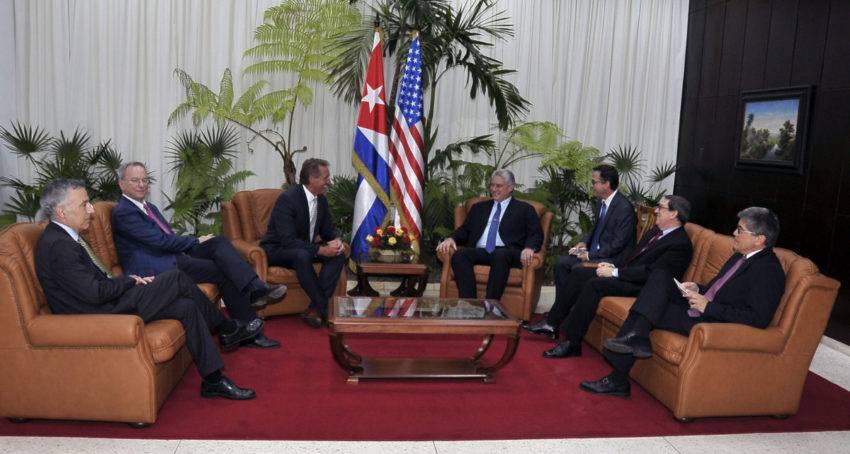
You must be logged in to post a comment.